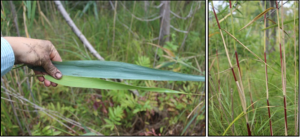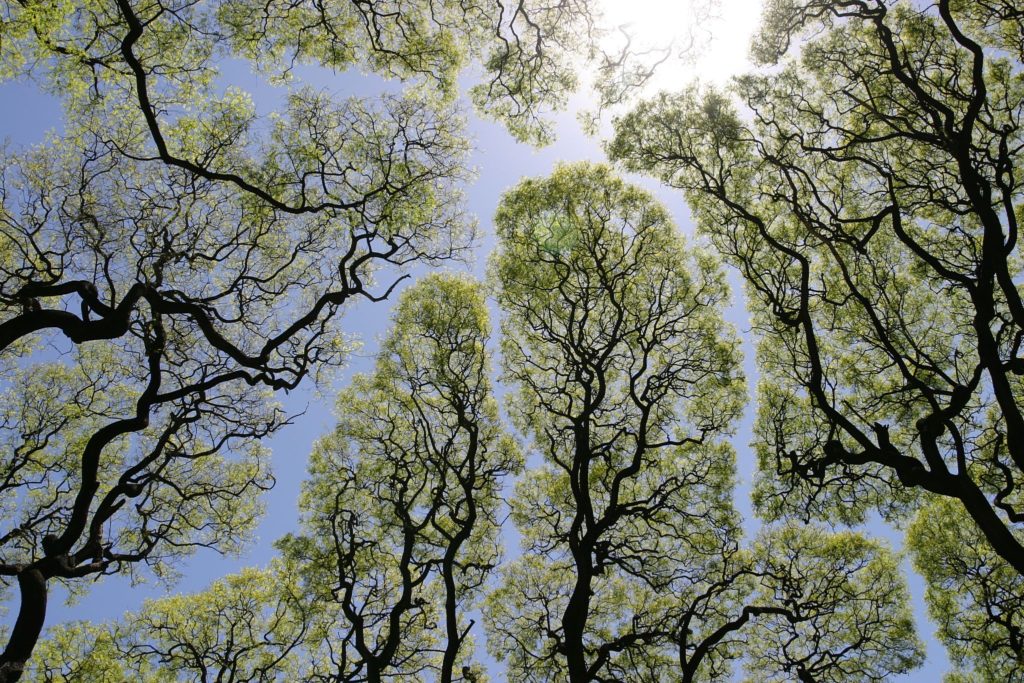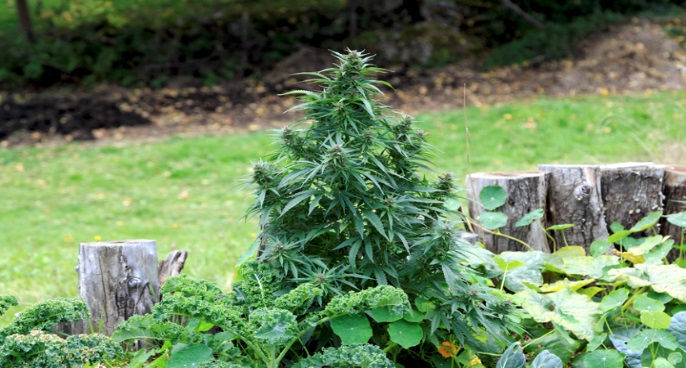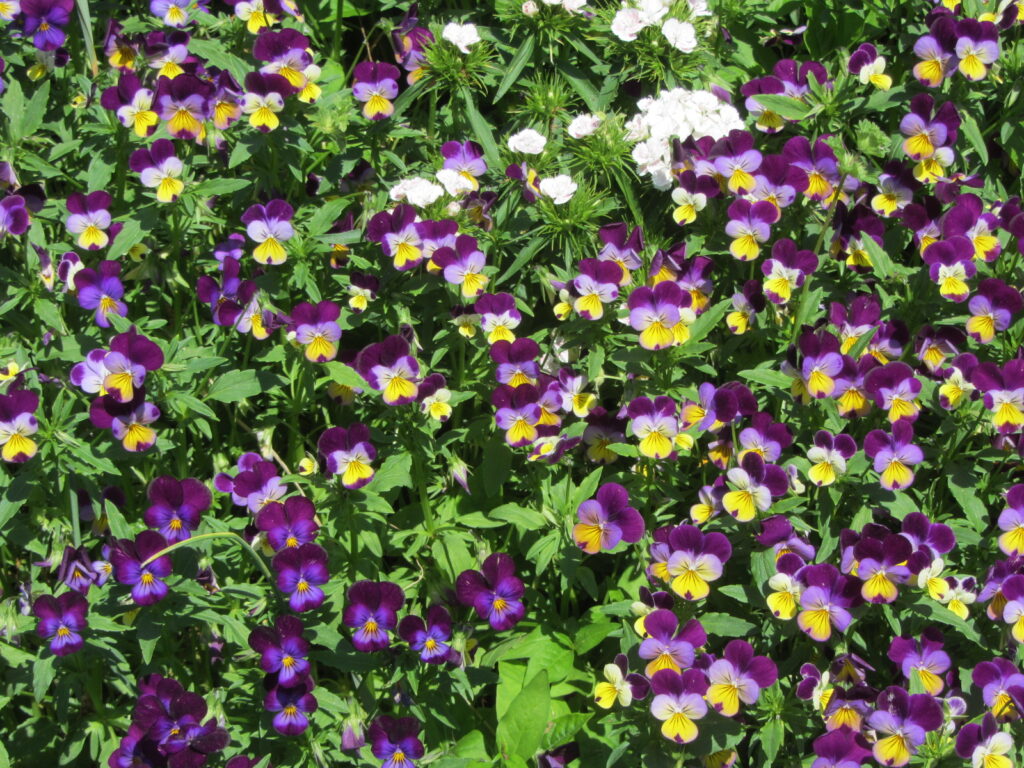
Phragmites australis, known as European Common Reed is extremely aggressive and invasive. It is found along roadways, edges of rivers, streams, etc. Invasive phragmites are perennial grasses that have been damaging our ecosystems for decades. This hostile plant causes damage to our biodiversity, wetlands, and beaches.
The Phragmites are native to Eurasia. It is not clear how it arrived in North America, maybe by seed or as an interesting grass to add to our landscapes. Back then no one knew how aggressive this reed grass was, how quickly it could spread, or its damaging effects. This Phragmites out-competes our native species for water and nutrients. It also releases toxins from its roots into the soil to hinder the growth and kill surrounding plants.
While it prefers areas of standing water, the roots of these Phragmites can grow to extreme lengths, allowing them to survive in drier areas.
Recognize invasive phragmites
We do have native phragmites – American common reed or Phragmites australis subsp. americanus. Unfortunately, it is quickly losing ground to its larger aggressive foreign counterpart.
How to recognize the difference? Our native species are far less robust and usually appear scattered throughout a wetland community.
Stands of the invasive phragmites are widespread, dense, and more than 7 feet tall. The leaves are longer and have a bluish hue. It also has larger and denser flowerheads. These large, tall, and extremely dense monoculture stands prevent sunlight from reaching other wetland species, effectively choking them out. The stems of these plants break down slowly contributing to the appearance of a thick vegetative stand.
Here are some notable features of the native americanus as listed by Minnesota Wildflowers:
- does not normally form dense monocultures where australis does, spreading rapidly from hardy rhizomes as well as stolons, which can grow up to 50 feet long and more than 4 inches a day
- is less robust than australis, which is more densely flowered and has tougher stems that do not deteriorate very rapidly, a stand becoming a dense mix of old and new stems
- height does not generally exceed 7 feet, where australis may reach 15 feet or more
- leaves are green to yellowish-green, australis are blue-green, though this isn’t necessarily obvious unless they are side by side
- ligules are .4 to 1+mm long (excluding the fringe of hairs), australis ligules are .1 to .4mm long (excluding hairs)
- sheaths are loose and often fall off especially on the lower and mid stem, australis sheaths are tight around the stem and persist. Note that fresh sheaths on americanus can also be tight but loosen as they dry.
- lower to mid stems are smooth, somewhat shiny and maroon to chestnut colored, australis stems are ribbed and roughish, dull green to tan
- glumes are longer than australis, the lower mostly more than 4mm long and the upper more than 6mm, where australis lower glume is mostly less than 4mm and upper less than 6mm

What’s the impact of the invasive Phragmites? Very disturbing!
It crowds out native vegetation, thus resulting in decreased plant biodiversity. It clogs up our wetlands and generally provides poor habitat and food supplies for wildlife, including several species at risk. Fire hazard is increased as stands are composed of a high percentage of dead stalks. Dense stands can also invade farmland and affect agricultural crops. Road safety is impacted by the reduced visibility. Recreational activities such as swimming, boating, and angling can be reduced by crowded waterways.
TIP – Don’t use it in decorations!
The welcome of a new season is always a great excuse to jazz up the entrances of our homes and freshen our planters. In the fall our area garden centres are loaded with pots of mums, flowering kale, pumpkins, colourful gourds, and stalks of corn. If you like to forage and are drawn to the feathery heads of the tall grasses along the roadsides to add to your fall decorations……. PLEASE DON’T. They’re very likely to be the seed heads of invasive phragmites and you’ll be helping them spread their seeds hither and yon!
So, what we can do to minimize the spread of these hostile Phragmites?
CLICK HERE for Best management practices – from the experts at Ontario Invasive Plant Council
- Learn to identify invasive Phragmites so you can avoid accidentally spreading their root fragments or seeds. This is especially important if you are planning to do work in an area that contains invasive Phragmites.
- Do not compost invasive Phragmites. Both seeds and rhizomes (horizontal plant stems growing underground) can survive and grow in compost.
- And, please do not use any part of this plant in fall decorations inside or outside of your home.
Resource: https://www.ontario.ca/page/phragmites-fact-sheet






About The Author: Nancy Abra
The family kitchen garden has always been a big part of my life from the early days growing up on a farm to current days gardening near Thorndale, Ontario.
I have honed my gardening knowledge with various courses including a certificate in Horticulture from the University of Guelph, ongoing training with the London Middlesex Master Gardeners, active membership with the local Horticultural Society and as a volunteer gardener at Fanshawe Pioneer Village, It has always been important to me to feed my family from the best of my garden or from locally grown produce. For almost 50 years of preserving, canning, pickling, and using heirloom recipes including some of my own creations, I have developed tasty preserves for my family and friends which I market locally with the brand name "From My Garden".
More posts by Nancy Abra